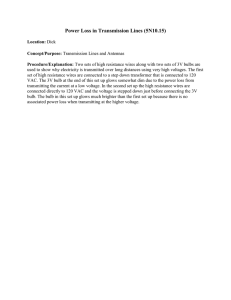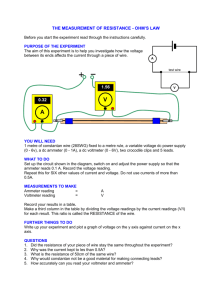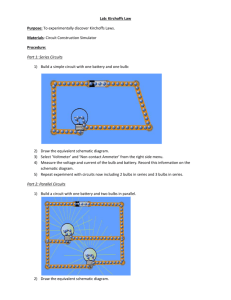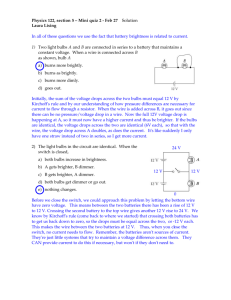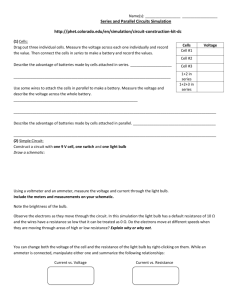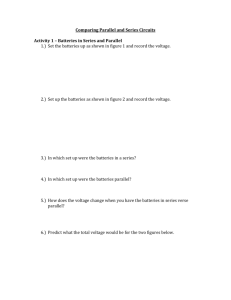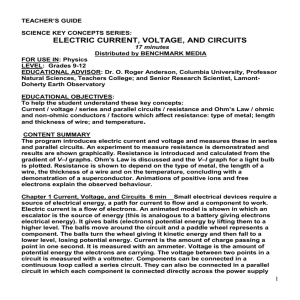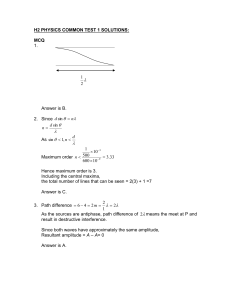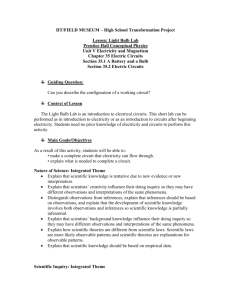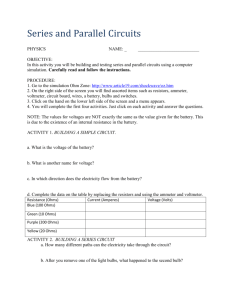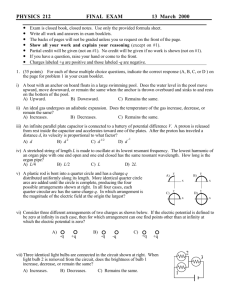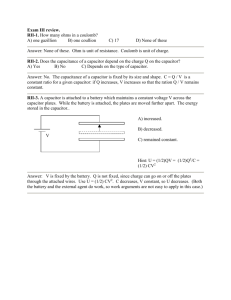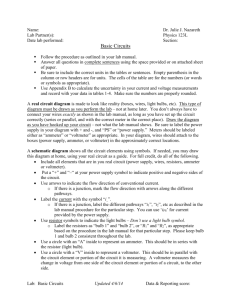Section 6: Current, Voltage, and Resistance in Parallel and Series
advertisement
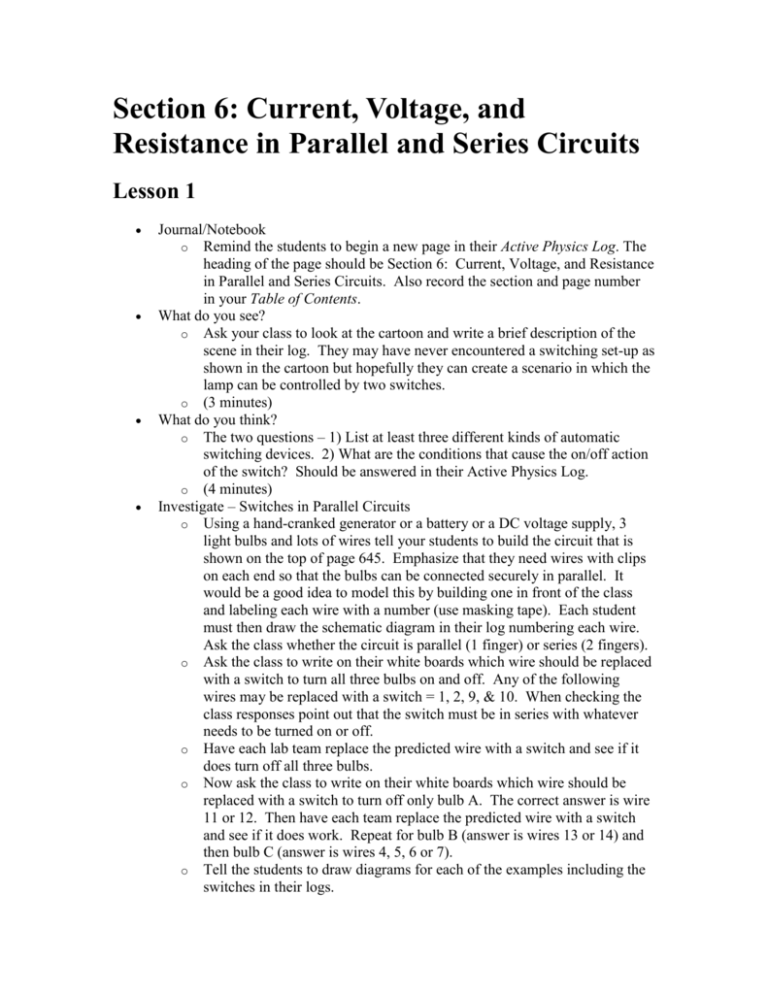
Section 6: Current, Voltage, and Resistance in Parallel and Series Circuits Lesson 1 Journal/Notebook o Remind the students to begin a new page in their Active Physics Log. The heading of the page should be Section 6: Current, Voltage, and Resistance in Parallel and Series Circuits. Also record the section and page number in your Table of Contents. What do you see? o Ask your class to look at the cartoon and write a brief description of the scene in their log. They may have never encountered a switching set-up as shown in the cartoon but hopefully they can create a scenario in which the lamp can be controlled by two switches. o (3 minutes) What do you think? o The two questions – 1) List at least three different kinds of automatic switching devices. 2) What are the conditions that cause the on/off action of the switch? Should be answered in their Active Physics Log. o (4 minutes) Investigate – Switches in Parallel Circuits o Using a hand-cranked generator or a battery or a DC voltage supply, 3 light bulbs and lots of wires tell your students to build the circuit that is shown on the top of page 645. Emphasize that they need wires with clips on each end so that the bulbs can be connected securely in parallel. It would be a good idea to model this by building one in front of the class and labeling each wire with a number (use masking tape). Each student must then draw the schematic diagram in their log numbering each wire. Ask the class whether the circuit is parallel (1 finger) or series (2 fingers). o Ask the class to write on their white boards which wire should be replaced with a switch to turn all three bulbs on and off. Any of the following wires may be replaced with a switch = 1, 2, 9, & 10. When checking the class responses point out that the switch must be in series with whatever needs to be turned on or off. o Have each lab team replace the predicted wire with a switch and see if it does turn off all three bulbs. o Now ask the class to write on their white boards which wire should be replaced with a switch to turn off only bulb A. The correct answer is wire 11 or 12. Then have each team replace the predicted wire with a switch and see if it does work. Repeat for bulb B (answer is wires 13 or 14) and then bulb C (answer is wires 4, 5, 6 or 7). o Tell the students to draw diagrams for each of the examples including the switches in their logs. o (12 minutes) Investigate – Voltmeters and Ammeters in Parallel Circuits o Your students need to place a voltmeter in the parallel circuit to measure the voltage drop across any light bulb. As stated in the textbook, the positive side of the voltmeter should be connected to the positive side of the generator or else the voltmeter will try to produce a negative reading. If it does, reverse the wires on the voltmeter. The power supply can either be a battery or a hand-cranked generator. The battery or DC voltage source is preferable because the voltage will be constant and give better results where as with a hand-cranked generator the voltage will vary. If your class does use hand-cranked generators, try and have the students crank at a constant rate which will give a nearly constant voltage. o Students should place an ammeter in the circuit to measure the current though the first light bulb which is similar to placing a switch in the circuit. Switches are always placed in series with the bulb (load) and so should an ammeter. o Students must record the voltage across the first light bulb as well as the current through it. o Repeat the investigation for the second and then the third bulb and record all results in your log in a table like the one on page 646. o (12 minutes) HW o Physics to Go o Page 658 # 1, 2 = important for the Chapter Challenge o Page 658 3, 4, 5

